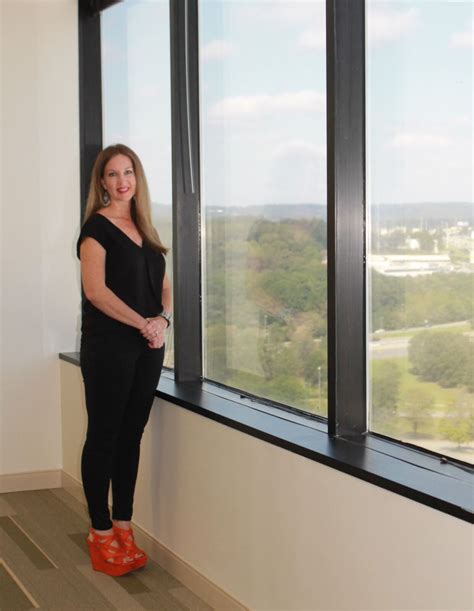Lisa Ferris, a resilient and inspiring advocate, has dedicated her life to empowering the blind community in Alabama. Despite being visually impaired since childhood, Lisa has overcome adversity and become a beacon of hope for countless individuals facing similar challenges.

Early Life and Challenges
Growing up in rural Alabama, Lisa faced numerous obstacles due to her blindness. Lacking access to specialized education and resources, she struggled to keep up with her peers. However, Lisa’s unwavering determination and support from her family pushed her forward.
Education and Advocacy
“Education is the key to unlocking potential,” Lisa often says. She pursued higher education at the University of Alabama at Birmingham, where she earned a bachelor’s degree in social work. Inspired by her own experiences, Lisa became involved in disability advocacy, working tirelessly to improve the lives of blind and visually impaired individuals.
Establishing the Alabama Center for the Blind
In 1998, Lisa’s dream of creating a comprehensive resource center for the blind community became a reality. She founded the Alabama Center for the Blind (ACB), a non-profit organization dedicated to providing education, rehabilitation, and support services. Today, the ACB serves over 1,000 individuals annually, offering a wide range of programs.
Fighting for Disability Rights
Lisa’s advocacy extended beyond the ACB. She became a staunch supporter of the Alabama Disability Rights Advisory Council, where she fought for accessible transportation, employment opportunities, and equal rights for people with disabilities. Her efforts helped shape policies that improved the lives of countless Alabamians.
Innovative Technology for the Blind
Lisa recognized the transformative power of technology for the blind. She worked closely with local businesses and universities to develop innovative solutions that enhance accessibility and independence. For example, she partnered with the Birmingham VA Medical Center to implement a virtual reality program that helps veterans with visual impairments navigate their surroundings.
Overcoming Challenges and Inspiring Others
Throughout her journey, Lisa has faced challenges head-on. She attributes her resilience to a strong support network and an unwavering belief in herself. “Don’t let your disability define you,” she advises others. “Embrace your strengths and find ways to make a positive impact.”
Recognizing Lisa Ferris’ Legacy
Lisa Ferris’ exceptional contributions to the blind community have been widely recognized. She has received numerous awards, including the Helen Keller Humanitarian Award and the Birmingham Mayor’s Award of Excellence. Her legacy continues to inspire and empower countless individuals facing blindness and other challenges.
Common Mistakes to Avoid When Interacting with Blind Individuals
- Assuming they can’t do things. Blind individuals are capable of living fulfilling lives. Avoid making assumptions about their abilities.
- Talking down to them. Treat them with respect and listen to their perspective.
- Touching them without permission. Always ask before touching a blind person.
- Leaving them out of conversations. Include them in discussions and social events.
- Using offensive language. Avoid using terms like “blind” or “disabled” as nouns.
Frequently Asked Questions About Blindness
1. How many people in Alabama are blind?
According to the Alabama Department of Rehabilitation Services, there are approximately 110,000 visually impaired individuals in Alabama, of whom 15,000 are legally blind.
2. What are the leading causes of blindness?
Age-related macular degeneration, diabetic retinopathy, and glaucoma are the most common causes of blindness in Alabama and the United States.
3. Are there any assistive devices that can help blind people?
Yes, various assistive devices, such as screen readers, magnifiers, and talking clocks, help blind people navigate their surroundings, read, and communicate.
4. What are the biggest challenges facing blind individuals?
Blind individuals face challenges related to education, employment, transportation, and social isolation.
Lisa Ferris’ Top 5 Tips for Empowering Blind Individuals
- Provide access to quality education. Ensure blind students have equal opportunities to learn and succeed.
- Promote employment opportunities. Create inclusive workplaces that welcome and support blind employees.
- Invest in accessible technology. Implement assistive technologies that enhance independence and participation.
- Advocate for disability rights. Protect the rights of blind individuals and ensure their full inclusion in society.
- Foster a supportive community. Create safe and welcoming environments where blind individuals can thrive.
Key Performance Indicators of the Alabama Center for the Blind
| Program | Number of Participants |
|---|---|
| Education | 500+ |
| Rehabilitation | 300+ |
| Support Services | 200+ |
| Advocacy | 100+ |
Table of Assistive Technologies for Blind Individuals
| Device | Function |
|---|---|
| Screen Reader | Converts text to speech |
| Magnifier | Enlarges text and images |
| Talking Clock | Announces the time |
| GPS Navigation Device | Provides turn-by-turn directions |
| Braille Printer | Produces tactile text |
Table of Resources for Blind Alabamians
| Organization | Services | Contact |
|---|---|---|
| Alabama Center for the Blind | Education, rehabilitation, and support services | (205) 942-1022 |
| Alabama Department of Rehabilitation Services | Vocational rehabilitation and services | (334) 213-7000 |
| National Federation of the Blind of Alabama | Advocacy and support for blind individuals | (205) 250-4100 |
Lisa Ferris: A Role Model for Disability Empowerment
Lisa Ferris’ unwavering determination and unwavering commitment to improving the lives of blind Alabamians have made her a true inspiration. Her legacy will continue to shape the future of disability advocacy and empowerment for generations to come.
